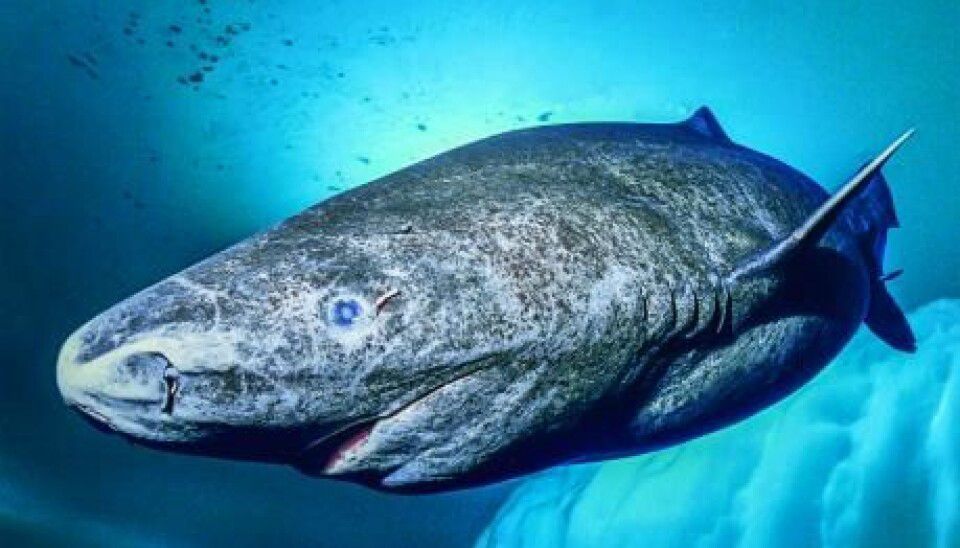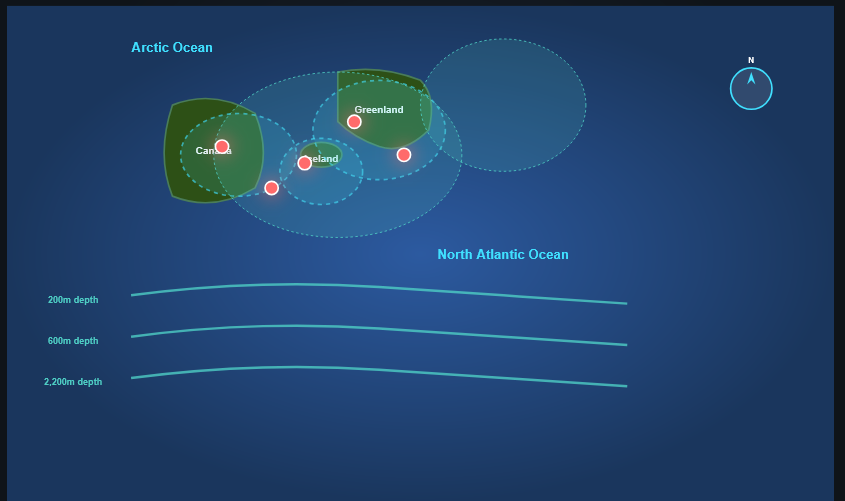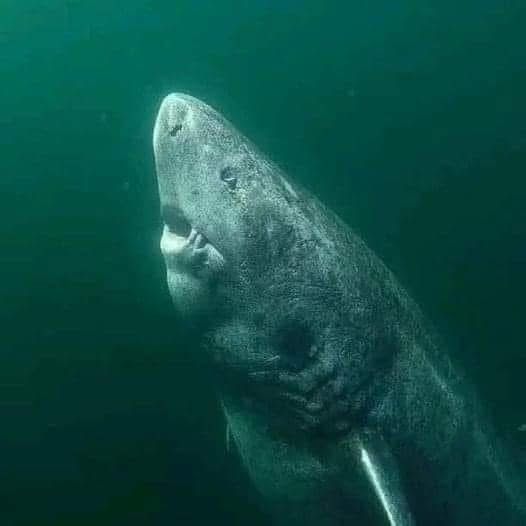Imagine a creature so ancient that it was born before the United States even existed – a shark that has been swimming through the icy darkness of the Arctic Ocean since 1627. Meet the Greenland shark (Somniosus microcephalus), officially recognized as the longest-lived vertebrate on Earth.

Where do they live?
Greenland sharks inhabit the cold, deep waters of the North Atlantic and Arctic Oceans. They are most commonly found:
• Around Greenland, Iceland, and Canada.
• At depths of 200 to 600 meters (656 to 1968 feet), though they can dive as deep as 2,200 meters (7,200 feet).
• In temperatures usually below 5°C (41°F), which helps maintain their slow metabolism and preserve their longevity.
These sharks prefer the darkness and frigid waters of the Arctic, where they are rarely disturbed by predators or humans.

Who first discovered them?
Greenland sharks have been known to Inuit hunters for centuries, referred to as “eqalussuaq” in Greenlandic. Western scientific documentation began with Samuel G. Morton in 1843. Still, it wasn’t until the 2016 study led by marine biologist Julius Nielsen that their age and extreme longevity became known worldwide.
When were they last found?
The most notable recent discovery was published in August 2016 in the journal Science. Researchers analysed 28 female Greenland sharks caught as bycatch by Greenlandic fishermen. The largest shark, measuring over 5 meters (16.5 feet) in length, was radiocarbon dated to be approximately 392 ± 120 years old, with an estimated birth year of 1627.
While Greenland sharks continue to be encountered by Arctic and North Atlantic fisheries, sightings are rare due to their preference for deep, cold waters.

Why do they live so long?
These sharks are unique among vertebrates:
• They grow extremely slowly, about 1 cm per year.
• Females reach sexual maturity at around 150 years old.
• Their slow metabolism due to the cold environment reduces cellular damage over time, potentially holding secrets to aging and longevity.
How long can they grow?
Greenland sharks are among the largest shark species in the world, reaching lengths of over 20 feet (6 meters) and weights up to 1,000 kg (2,200 lbs). Despite their massive size, they move very slowly, earning them the nickname “sleeper sharks.”
Why is this discovery so incredible?
To put it in perspective:
• This shark was alive when Shakespeare’s plays were being performed for the first time.
• It predates Isaac Newton’s birth (1643) and the founding of the United States (1776).
• It swam through Arctic waters before the invention of the steam engine, the light bulb, and even the first camera.

What do they eat?
Greenland sharks are opportunistic feeders. Their diet includes:
• Fish such as halibut, cod, and smaller sharks.
• Marine mammals like seals.
• Carrion, including remains of reindeer and even polar bears found in their stomachs, suggests scavenging behavior.
A living piece of history
Unlike fossils, this shark is still alive today, gliding quietly through the Arctic seas. It is a reminder that Earth is full of quiet, mighty wonders, and some have been around longer than most countries.

